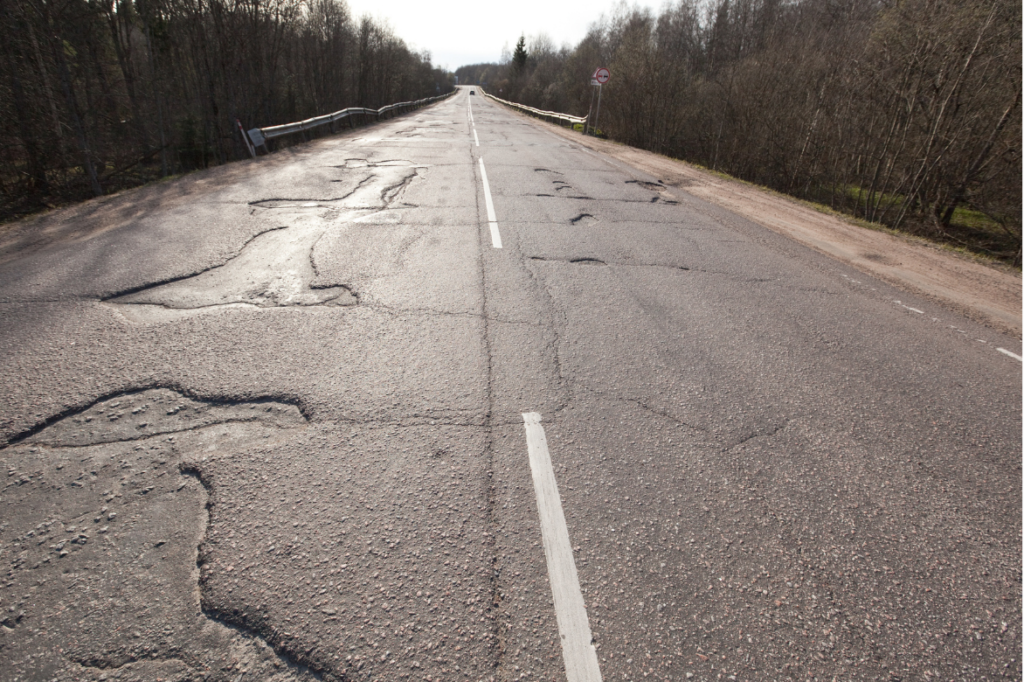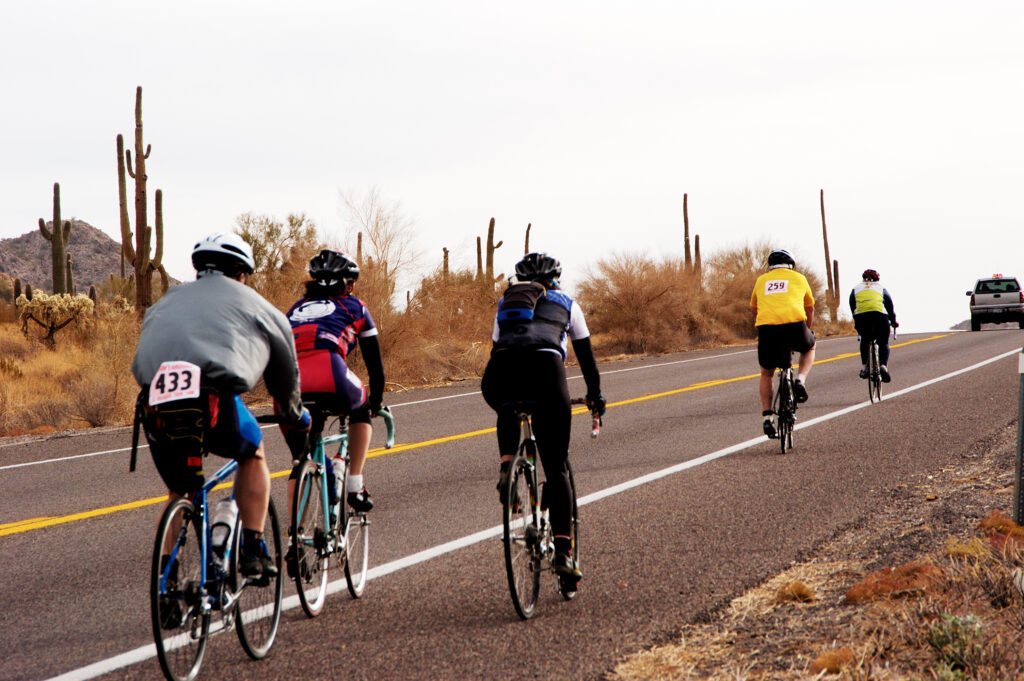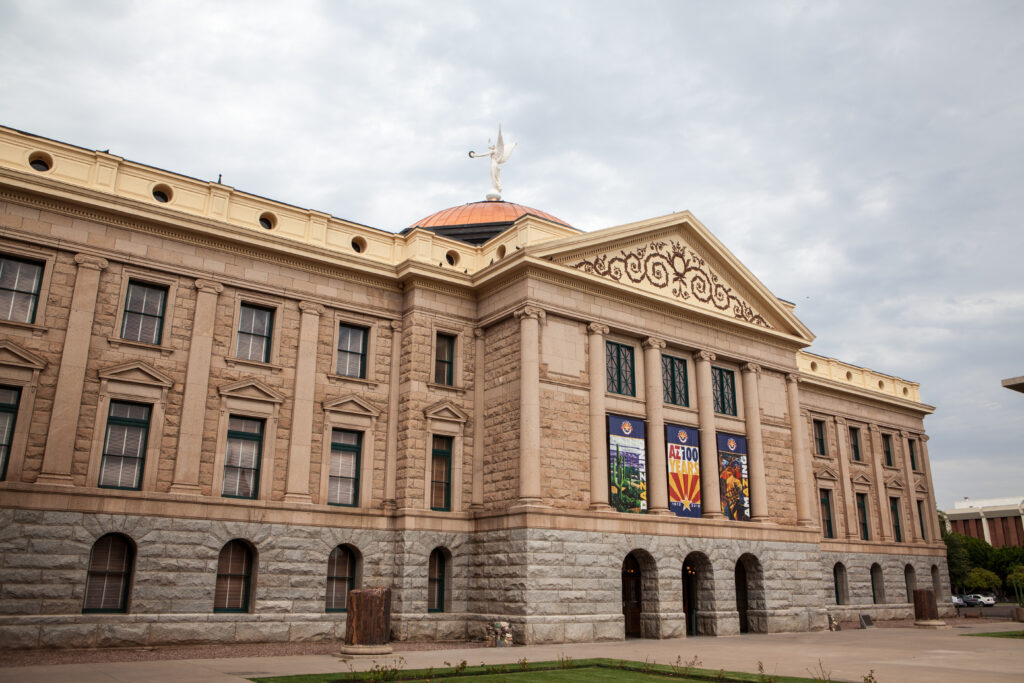Maricopa County Bike Laws for Cyclists

Are you confused about the bike laws in Maricopa County? This guide provides clear information on the requirements for cyclists, including helmet usage, bike lane rules, night riding regulations, and required safety gear, all of which are part of the Maricopa County bike laws. Stay compliant and safe by understanding these local laws. Key Takeaways Cyclists in Maricopa County must follow the same traffic laws as motor vehicles and are required to use designated bike lanes when available. Helmet use is mandatory for riders under 18, and while adults aren’t legally required to wear helmets, it’s strongly recommended for safety. Night riding requires bikes to have functional lights and reflectors, and cyclists should maintain a safe distance from motor vehicles to avoid accidents. Understanding Maricopa County Bike Laws Maricopa County has established specific bike laws to enhance cyclist safety and regulate bicycle operation within the area. Cyclists here must adhere to the same traffic laws as motor vehicle drivers, ensuring a predictable and safe environment for everyone on the road. The trail consists of various features such as elevation changes and diverse terrain, offering both physical challenges and scenic views. Educational programs often include training on safe riding practices and local cycling laws, helping cyclists stay informed and compliant. These laws are not just about rules; they are about creating a harmonious and safe cycling community. Helmet Requirements In Maricopa County, wearing a helmet is mandatory for riders under the age of eighteen. This law aims to protect young cyclists from serious head injuries, which are significantly reduced by helmet use. Although adult bikers are not legally required to wear helmets, it’s highly recommended for all ages to enhance safety while riding. Bike Lane Usage Cyclists in Maricopa County are required to use designated bike lanes where available. These trail passes through various areas and landscapes, offering scenic views, residential areas, and access to parks. However, they can leave these lanes when necessary, such as to navigate intersections safely or avoid obstacles. Adhering to bike lane rules ensures a smoother ride and reduces the risk of accidents. Night Riding Regulations Night riding in Maricopa County requires cyclists to equip their bikes with lights and reflectors to enhance visibility. Front and rear lights are encouraged to ensure that cyclists are seen by other road users. A working brake system is also necessary for safety during nighttime rides. Safety Gear and Equipment Protective gear is a necessity for compliance with bike laws in Maricopa County. Cyclists are required to use specific safety gear to ensure their own safety and the safety of others. Visible clothing and bike lights are crucial during low visibility conditions, ensuring cyclists are easily seen by drivers and other road users. Required Bike Features Arizona law mandates that bicycles must be equipped with functional brakes to ensure safe stopping. Additionally, a bell or horn is required to alert pedestrians and other cyclists of your presence. These features are essential for complying with local regulations and ensuring a safe riding experience. Recommended Safety Gear While not all safety gear is legally required, items like helmets, biking gloves, and mirrors are highly recommended. Helmets provide critical head protection, while gloves enhance grip and comfort during rides. Mirrors help cyclists stay aware of their surroundings, and padded shorts can make longer rides more comfortable by reducing chafing. Rules of the Road for Cyclists Just like motor vehicle drivers, cyclists must follow traffic rules to ensure safety on the road. This includes obeying stop signs, traffic lights, and other signals. Riding predictably and being aware of your surroundings are key practices to enhance safety when sharing the road with cars. Always remember that cyclists are more vulnerable in collisions, so extra caution is necessary. Traffic Signals and Signs Failing to stop at stop signs and running red lights are common infractions among cyclists. To ensure safety, cyclists must adhere to traffic signals and signs just like any other road user. Proper lighting at night is also crucial to avoid violations and accidents. Right-of-Way Establishing eye contact with drivers is a simple yet effective way to confirm visibility and ensure mutual understanding at intersections. This practice helps prevent accidents and ensures that both cyclists and drivers are aware of each other’s presence. Following right-of-way rules is essential for safety and predictability in traffic situations. Passing and Being Passed When passing other vehicles, cyclists should always signal their intentions and maintain a safe distance. Similarly, when being passed by motor vehicles, cyclists should ride in a straight line and stay aware of their surroundings to avoid sudden movements. These practices greatly reduce the risk of accidents on the road. Interacting with Motor Vehicles Interacting safely with motor vehicles requires cyclists to yield to pedestrians in crosswalks and follow specific right-of-way rules. Unfortunately, motorists often lack awareness of the laws regarding cyclists, leading to misunderstandings about shared roadway rights. Educating both drivers and cyclists on these laws is crucial for safer interactions on the road. Safe Distance Maintaining a safe distance from motor vehicles is crucial for preventing accidents. Cyclists are advised to keep at least three feet away from moving vehicles and four feet from parked cars to avoid being caught by suddenly opened doors. On narrow roads, ride as far to the right as safely possible while maintaining this minimum distance. Communicating Intentions Using hand signals is essential for cyclists to indicate turns and stops to drivers. This practice helps drivers anticipate cyclists’ movements and avoid collisions. When overtaking other cyclists, make sure there is adequate space and signal your intentions clearly. Urban Trails and Bike Paths Maricopa County is blessed with numerous urban trails and bike paths that cater to cyclists of all skill levels. Bicycle programs in Arizona play a crucial role in promoting safe cycling and enhancing local infrastructure. SARA Park offers a variety of recreational activities, with stunning scenery and vistas of the city’s namesake lake, making it a popular spot for mountain biking. These resources, including bike
Navigating Roadway Hazard Claims: A Step-by-Step Guide for Injured Cyclists in Arizona

Cycling in Arizona can be a rewarding way to explore the state’s beautiful landscapes, stay fit, and reduce your environmental impact. Unfortunately, dangerous road conditions can sometimes turn your ride into a disaster. Cracks, potholes, poorly maintained roadways, and insufficient signage can lead to serious accidents, leaving cyclists injured and facing significant medical bills and other losses. If you’ve been injured due to hazardous road conditions in Arizona, you may be able to pursue a claim against the government entity responsible for maintaining the roads. However, making a claim against a public entity in Arizona requires you to follow specific legal procedures, outlined in A.R.S. § 12-821.01. This guide will walk you through the steps you need to take, highlighting how Lawyers 4 Cyclists can help you navigate this complex process. Understanding Your Rights as a Cyclist in Arizona Arizona law requires public entities to maintain roadways in a reasonably safe condition for all users, including cyclists. When a public entity fails in this duty, dangerous conditions can develop on the road, putting cyclists at risk of injury. If you’ve been hurt due to a road hazard such as a pothole, debris, or poor road design, you have the right to seek compensation from the responsible public entity. In Arizona, however, claims against public entities are governed by specific legal rules, including the requirement to file a notice of claim within a strict deadline. At Lawyers 4 Cyclists, we have extensive experience handling claims for cyclists injured by dangerous road conditions, and we can help you navigate the process to ensure your claim is filed correctly and on time. Step-by-Step Process for Bringing a Claim Against a Government Entity in Arizona Step 1: Identifying a Dangerous Road Condition Before you can file a claim, it’s important to determine whether the condition that caused your accident qualifies as a “dangerous condition” under Arizona law. Dangerous road conditions can include: If you believe that a dangerous condition caused your accident, gathering evidence is essential. Lawyers 4 Cyclists can help you document the road hazard, gather witness testimony, and build a solid foundation for your claim. Step 2: Taking Immediate Action After the Accident After any accident, your health should be the top priority. Seek medical attention as soon as possible, even if your injuries don’t seem severe at first. In addition to getting medical care, gather as much evidence as you can from the accident scene. This might include: At Lawyers 4 Cyclists, we understand how important it is to gather this information quickly and thoroughly. Our team will assist you in obtaining additional evidence, such as road maintenance records, to prove that the government knew or should have known about the hazardous condition. Step 3: Filing a Notice of Claim Within 180 Days One of the most important aspects of pursuing a claim against a government entity in Arizona is complying with the strict filing deadlines outlined in A.R.S. § 12-821.01. Under this statute, you must file a notice of claim with the responsible public entity within 180 days of the date of the accident. Missing this deadline can prevent you from pursuing any compensation. Here’s what the notice of claim process entails: Once the notice is submitted, the government entity will review your claim. Lawyers 4 Cyclists can assist you with this crucial step, ensuring that your notice of claim is accurate and timely. Step 4: The Government’s Response to Your Notice of Claim Once the public entity receives your notice of claim, they have 60 days to respond. The possible responses include: If your claim is denied or the settlement offer is insufficient, the next step is to file a lawsuit. Step 5: Filing a Lawsuit After Claim Denial If the government denies your claim or fails to respond within the 60-day window, you have the right to file a lawsuit against the public entity. However, you must file the lawsuit within one year of the date of the accident, as required by A.R.S. § 12-821. Filing a lawsuit against a public entity can be complicated, and it requires a deep understanding of the legal issues involved. You’ll need to prove that the dangerous condition existed and that the government entity was negligent in addressing it. Lawyers 4 Cyclists will help you build a strong case by: We will handle every aspect of the litigation process, from filing the necessary paperwork to representing you in court. Step 6: Seeking Compensation for Your Injuries Once your lawsuit is filed, you’ll be seeking compensation for the damages you’ve suffered as a result of the accident. These damages may include: At Lawyers 4 Cyclists, we work tirelessly to ensure that you receive full and fair compensation for your injuries and losses. We understand the impact these accidents can have on your life, and we’re here to fight for your rights. Step 7: Why You Need Lawyers 4 Cyclists on Your Side Handling a claim against a public entity under A.R.S. § 12-821.01 is complex and time-sensitive. Missing even one step in the process or failing to provide the correct documentation can result in your claim being denied. That’s why it’s essential to have an experienced legal team like Lawyers 4 Cyclists on your side. We have extensive experience helping injured cyclists pursue claims against government entities in Arizona. Our team will: By choosing Lawyers 4 Cyclists, you’re partnering with a law firm that understands the unique challenges faced by injured cyclists. We’ll handle every aspect of your case so you can focus on your recovery. Conclusion: Don’t Let Dangerous Roads Go Unchallenged If you’ve been injured due to a dangerous road condition in Arizona, don’t wait to take action. The Government Claims Act in Arizona imposes strict deadlines, and missing these deadlines can prevent you from recovering the compensation you need to recover from your injuries. At Lawyers 4 Cyclists, we’re here to guide you through the entire claims process, from filing your notice of claim to pursuing a lawsuit if
Maricopa County Cycling: A Guide to Cycling in the Phoenix and Scottsdale Areas

Cycling in Maricopa County, particularly in the vibrant cities of Phoenix and Scottsdale, offers a unique blend of urban and scenic routes, making it a popular activity for both residents and visitors. This guide will provide comprehensive information on cycling laws, accident statistics, popular routes, and safety tips for cyclists in this dynamic region. Table of Contents 1. Introduction Maricopa County is not only the most populous county in Arizona but also one of the fastest-growing regions in the United States. With its extensive network of roads, pathways, and dedicated bike lanes, it provides an excellent environment for cycling enthusiasts. The mild climate, especially during the fall and spring months, makes cycling a year-round activity. However, it’s essential for cyclists to be aware of local laws and safety guidelines to ensure a safe and enjoyable experience. 2. Cycling Laws and Regulations in Maricopa County 2.1 Arizona Vehicle Code Arizona has specific laws that govern cycling to enhance the safety of both cyclists and motorists. Here are some key points from the Arizona Revised Statutes (ARS) relevant to cyclists: 2.2 Local Ordinances Local ordinances in cities like Phoenix and Scottsdale further refine cycling laws to address specific community needs: Understanding and adhering to these laws is crucial for ensuring a safe cycling experience and avoiding potential legal issues. 3. Bicycle Accident Statistics in Maricopa County Accident statistics highlight the importance of safety while cycling in Maricopa County. According to the Arizona Department of Transportation (ADOT) and the National Highway Traffic Safety Administration (NHTSA), the following key statistics have been observed in recent years: These statistics understand the importance of adhering to cycling laws, being aware of surroundings, and implementing safety practices while cycling. In the unfortunate event of an accident, understanding your rights and how to proceed is crucial. 4. Common Cycling Routes in Phoenix and Scottsdale 4.1 Phoenix Cycling Routes Phoenix boasts a variety of cycling routes that cater to different skill levels and preferences. Here are some popular options: 4.2 Scottsdale Cycling Routes Scottsdale is known for its picturesque landscapes and well-maintained bike paths. Here are some of the top cycling routes in the area: 5. Tips for Safe Cycling in Maricopa County To ensure a safe and enjoyable cycling experience in Maricopa County, consider the following tips: 6. How Lawyers 4 Cyclists Can Help In the unfortunate event of a bicycle accident, having the right support is crucial. Lawyers 4 Cyclists specializes in helping cyclists navigate the legal challenges following an accident. Here’s how they can assist you: If you’ve been involved in a bicycle accident in Maricopa County, don’t hesitate to reach out to Lawyers 4 Cyclists for the support you need. 7. Conclusion Cycling in Maricopa County offers a wonderful opportunity to explore the vibrant cities of Phoenix and Scottsdale while enjoying the beautiful Arizona landscape. By understanding local laws, being aware of accident statistics, and choosing safe cycling routes, riders can make the most of their cycling experience. Remember to prioritize safety and stay informed about regulations. In case of an accident, Lawyers 4 Cyclists is here to help you navigate the complexities of your situation, ensuring your rights are protected and you receive the compensation you deserve. Whether you’re commuting, exercising, or enjoying a leisurely ride, having knowledgeable legal support can make a significant difference in the aftermath of a cycling accident. With their expertise, Lawyers 4 Cyclists can help you focus on recovery while they handle the legal intricacies, providing peace of mind during a challenging time. By equipping yourself with knowledge about cycling laws, staying informed on safety practices, and knowing where to turn for help in case of an accident, you can make the most of your cycling experience in Maricopa County. Embrace the joy of cycling while remaining vigilant, and remember that Lawyers 4 Cyclists is dedicated to advocating for the rights of cyclists throughout Arizona. This comprehensive guide aims to empower cyclists in Maricopa County, ensuring they have the necessary tools and information for safe riding. Happy cycling!
Cycling in the Grand Canyon State: Guide to New Arizona Bicycle Laws for 2024 and 2025

As Arizona continues to grow in popularity as a destination for cyclists, whether for recreation or commuting, state legislators and city governments have taken steps to ensure the safety and accessibility of bicycling on public roads. For 2024 and 2025, several new laws and proposed ordinances are designed to address emerging issues in cycling safety, road-sharing, and infrastructure development. This article provides a detailed overview of the latest legislative changes affecting cyclists across the state, as well as proposed local ordinances in major cities like Phoenix, Tucson, and Flagstaff.


